Exceptional fine Smith & Wesson Model Number One 2nd Issue Revolver
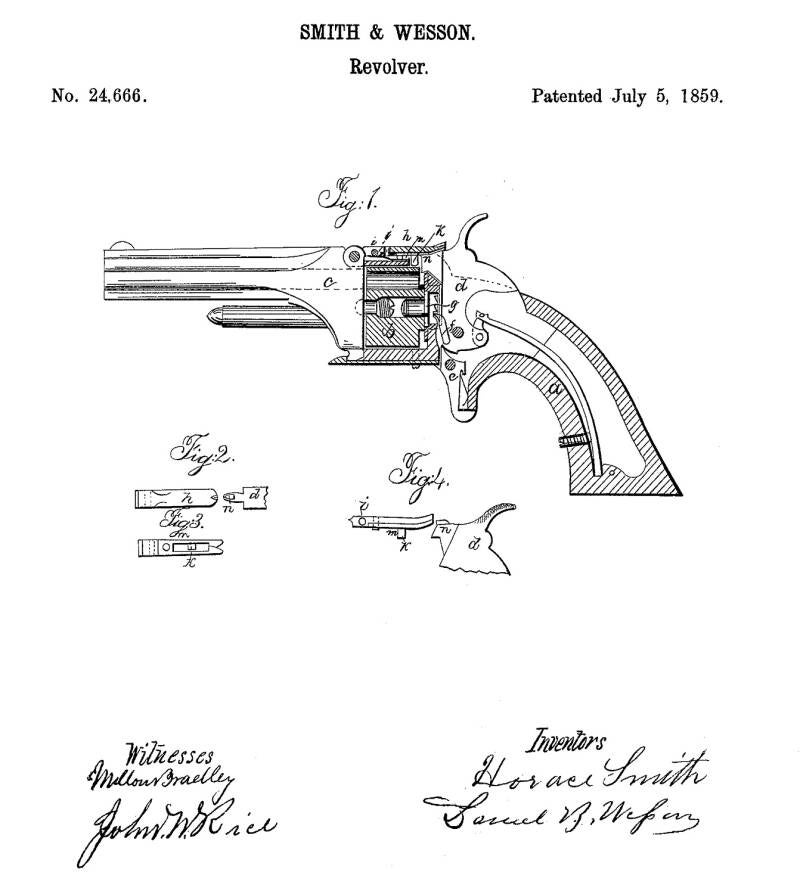
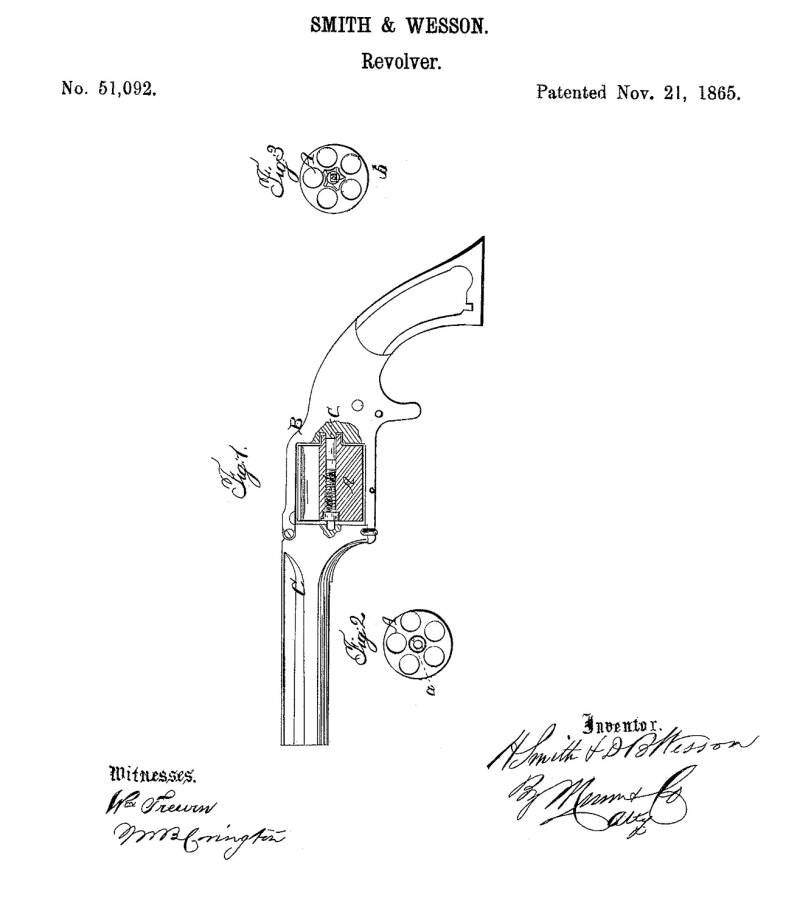
Manufactured 1860 to 1868, this is an excellent example of the most desirable pocket pistol. The top of the barrel rib is marked with the one line address, the cylinder is marked with the 1855 and 1859 patent dates, and the serial number 61833 is marked on the butt and stamped on the inside of the right grip panel. The left side of the frame under the grip, the front face of the cylinder and back of the barrel lug are marked with a "52". Blue barrel, ejector and cylinder, casehardened hammer and trigger, and silver plated frame. Fitted with smooth two-piece varnished rosewood grips.
Condition: Fine ++ / Excellent , the revolver retains most of the bright original high polish blue finish with some barely noticeable muzzle wear, visible cylinder drag line and a few minor scratches. The frame retains all the original silver plating which has an attractive untouched darkening. The grips are very fine with 98% original varnish. The markings are clear. The action is excellent. Hard to find these as solid as this one.
Collection MS Antique Firearms.
James Reid .22 Caliber 'My Friend' Knuckle Duster Revolver
Sam Colt did not actually invent the revolver, but in 1836 he did patent the first revolver mechanism that worked when it was supposed to. After that, his Colt company, along with Smith & Wesson and Remington, led the way in producing multishot pistols in the United States. But others besides the big three also made revolvers, especially after Colt’s patents for cap-and-ball revolvers expired in 1857, and after the Smith & Wesson/ Rollin White patents for cartridge revolvers expired in 1869. And one of the strangest revolvers was James Reid’s “My Friend” knuckleduster, a unique pepperbox designed as a pocket hideout gun that also turned out to be an ideal frontier gambler’s “friend.”
Born in Belfast, Ireland, on April 9, 1827, James Reid was a successful “iron turner” (machinist) in the cotton mills of Glasgow, Scotland, when he immigrated to the United States in late 1856. In Jersey City, N.J., he started a prosperous machinery-making business that in 1861 he moved to New York City, where the 1862 directory lists it as the James Reid Manufactory. And, according to Taylor G. Bowen in his definitive book James Reid and His Catskill Knuckledusters, “Reid began making his first pistols at this time.”
In 1860–61 Reid made about 100 small single-shot, .22-caliber cap-and-ball pistols for inventor Rollin White (who had sold his cartridge revolver patents to Smith & Wesson). And from 1861 to 1865 Reid produced about 3,000 pocket-sized .22- and .32-caliber rimfire revolvers, including some 1,200 that could be used as either cap-and-ball or cartridge revolvers that technically didn’t infringe on the Smith & Wesson/ Rollin White cartridge revolver patents.
Doctors diagnosed Reid’s 9- year-old daughter, Annie, with an unnamed lung disease and advised him to move her to an environment with “cleaner air.” So in 1864 Reid moved 100 miles north to the village of Catskill in the Catskill Mountains, bought an old gristmill and for the next three years operated the mill while also setting it up as his new gun factory.
Reid had begun developing the My Friend knuckleduster at his New York factory, and at the end of 1865 he received a patent for it. Modern dictionaries define “knuckledusters” and “brass knuckles” as the same thing. But in his 1989 book Bowen expands the meaning: “The knuckleduster is best described as a pocket-sized handgun of sturdy build with the option of using the fist, which holds the weapon, to strike a solid blow on an assailant rather than shoot him, without damage to hand or gun.” (Pepperbox pistols consisted of elongated barrels that were joined side by side lengthwise and revolved together, whereas Colt’s revolvers consisted of a revolving cylinder with separate chambers that fired through a single barrel as the cylinder rotated.) So Reid ingeniously combined all of those components into a short-barreled cartridge pepperbox that was basically a revolver without a barrel, with a grip that was a brass knuckle. As such, the guns didn’t infringe on the Smith & Wesson cartridge revolver patents.
Reid’s first knuckleduster was a seven-shot, .22-caliber single-action “pepper box,” usually engraved. They were instantly popular, and between 1868 and 1882 he made 10,690 of them. His next most popular knuckleduster was a five-shot, .32-caliber rimfire pepperbox that was just like the .22 but larger. He produced about 3,100 of the .32s between 1870 and 1882. He also came out with a still larger five-shot, .41-caliber rimfire knuckleduster in 1870. Calling all of his knuckledusters the My Friend was a clever marketing strategy, and because of its pocket size and larger bore, Reid also gave the big .41s even more appeal by marking them J. Reid’s Derringer. But he only made about 150 of them before production was dropped in 1872, probably because they were too heavy to carry as a pocket revolver. The retail prices of all of Reid’s knuckledusters ranged over the years from $8 to $12.
Back-to-back economic depressions from 1873 to the middle 1880s hit Reid’s gun business hard. In 1875 he brought out a five-shot, .32-caliber rimfire knuckleduster with a 3-inch barrel added to it, but he made only 250 of them. In 1877 he made 100 more of them with a 1 ¾-inch barrel. And in 1883 he made about 360 “New Model” five-shot, .32-caliber rimfire knuckledusters with lighter-weight fluted cylinders before production was finally dropped on all knuckledusters. “By 1880 Reid’s entire workforce consisted of just his three sons, one old hand and a boy helper,” Bowen notes. In 1882 and 1883 Reid produced about 400 small five-shot, spur-trigger pocket revolvers in .32- and .41-caliber rimfire before all of his gun production finally came to an end.
Many of Reid’s knuckledusters found homes in the coat pockets of Old West gamblers, but when the popular pepperbox revolvers were used in a shooting or a fistfight, the newspapers usually only referred to them as “derringer revolvers.” In 1869 William Beck advertised the My Friend as one of the revolvers he sold at his Sportsmen’s Emporium in Portland, Ore. And Pittsburgh firearms distributor James Bown & Son, in business as Enterprise Gun Works since the 1850s, advertised the My Friend as one of the more popular pistols that they sold on the frontier. Reid’s small-caliber knuckledusters may not have packed the big punch that a .44- or .45-caliber Colt did. But they did pack a detriment to a gunfight or a fistfight: As an old-time wrangler, quoted in firearms historian Charles Worman’s classic book Gunsmoke and Saddle Leather, explained, “To the far Westerner there is nothing so humiliating as to be threatened with or shot by a small caliber revolver.”
“It can be said that Reid’s invention of a simple protective knuckler was a humane answer to one of the great social problems of the post–Civil War era,” Bowen writes in his book. “Many years later a motto of his was quoted by [his grandson] Charles T. Reid, who recited, ‘Never shoot a man if you can knock him down.’ There is perhaps no better expression of James Reid’s philosophy, and it reveals a compassionate side of his character often overlooked amid firearm production statistics.” (Text Historynet)
This Knuckle Duster is Manufactured between 1868-1870. Frame under cylinder marked "MY FRIEND". Seven shot cylinder, with matching numbers on the cylinder, pin and frame. There is a safety device underside of frame. The frame is decorated with broad leaf scroll engraving. Solid grip section, with a checkered oval panel on the rear.
Condition: Very fine, with 10-20 % of the original blue remains on the cylinder with the balance having a brown grey patina. 70% of the original niter blue remains on the hammer and cylinder pin head. The frame retains 10% of the silver plating, with the brass having a pleasant, untouched aged patina. The engraving and markings are clear and crisp. Mechanically excellent!
Collection MS Antique Firearms.
Early production, 1858 Remington New Model Army Transition Revolver
The Interesting History of Remington Revolvers;
It began with a patent, an unbreakable patent belonging to Samuel Colt since 1835 that kept E. Remington & Sons at arm’s length from the late 1840s until the day Colt’s seven-year patent extension expired in 1857.
As an American arms manufacturer, Remington was much older than Colt, founded in 1816 by Eliphalet Remington II. Originally, Remington only manufactured barrels but did so quite successfully. In 1828, the company moved from Litchfield to larger facilities in Ilion, New York, along the Erie Canal, a major trade route in the 19th century. While Samuel Colt was busy rebuilding his fortunes in 1847 with the .44-caliber Walker and Whitneyville Dragoons, Remington was busy purchasing the Ames Company of Chicopee, Massachusetts, in 1848. He used Ames tooling to manufacture his first complete gun, a breech-loading percussion carbine built under contract to the U.S.
Navy. It was followed by a contract for 5,000 U.S. Model 1841 percussion “Mississippi” rifles. As for manufacturing revolvers, Remington (and every other U.S. arms-maker) was effectively blocked by the Colt patent. Nearly a decade would pass before Remington introduced its first model, the Remington-Beals revolver.
It was designed by Fordyce Beals, who shared not only the name but the June 24, 1856, and May 26, 1857, patents. Introduced on the heels of Colt’s patent expiration in 1857, the relationship with E. Remington & Sons and Fordyce Beals would continue for years, leading to many of the company’s most successful models. In 1858, Remington and Beals raised the bar for .44-caliber handgun designs with the introduction of the Remington-Beals Army model, an immediate and successful rival to the Colt Dragoons and their comparatively outdated (in Beals’ opinion) construction. The .44-caliber Remington Army was followed by a .36-caliber Navy Model. Over the years, Samuel Colt had continued to rely upon his original patent designs using a separate frame and barrel, which were joined with the cylinder on the arbor and secured in place with a wedge passing through the barrel lug and arbor. This was the traditional open-top design that everyone in the U.S. was trying (unsuccessfully) to copy and produce. Colt brought swift litigation against all copies. Beals and Remington were not interested in copying Colt, but rather building a different type of revolver that would, by design, be stronger and use a one-piece frame with a topstrap. And it would be far easier to reload. One had two options when reloading a Colt: Pour a measure of powder into each cylinder chamber, load a lead ball, turn the gun over and place a percussion cap on the nipple of each chamber. The second method was to disassemble the gun by removing the barrel and swapping out the empty cylinder for a loaded one. This was faster so long as you didn’t lose the barrel wedge.
With the Remington and Beals revolver design, traditional loading was the same as the Colt, but a cylinder change took only seconds and required virtually no disassembly. One placed the hammer at half-cock, lowered the loading lever and pulled the cylinder pin forward, rolled the empty cylinder out of the frame, put in a loaded one, pushed the cylinder pin back into place and then raised the loading lever. (You may recall seeing Clint Eastwood do this in the middle of a gunfight in Pale Rider and Anson Mount in the AMC television series Hell on Wheels.) It really was a better idea. With the start of the Civil War, Remington did not rest on its laurels. The Army and Navy models were fast becoming the Union’s second most carried sidearms. During the course of the war, Remington continued to make improvements to its original .36- and .44-caliber models, introducing the improved Army in 1861 and New Model Army and Navy in 1863. By the end of the Civil War, Remington had produced the second largest quantity of handguns used by the Union, a total of nearly 130,000 revolvers, of which more than 115,000 were .44-caliber models. Remington was also the benefactor of Colt’s misfortune—the factory fire of February 4, 1864—which destroyed the original structures erected by Samuel Colt in 1855. The fire destroyed the buildings where revolvers were manufactured and finished. So, the 1864 fire certainly played a role in the Ordnance Department’s increased orders from Remington before the end of the Civil War.
While Remington touted its superior designs, the Army and Navy models were not perfect. Remington’s revolvers were more prone to jamming than Colts and required more meticulous care. But there was much to be said for the ease of reloading, especially in the midst of a battle. End of Remington Revolvers
By 1875, Remington had converted or built thousands of cartridge revolvers in a variety of calibers and models. The New Model Army conversion went out of production in 1875 with the debut of Remington’s first all-new large-caliber cartridge model, the 1875 Single Action Army. The .38-caliber 1863 New Model Navy conversion, however, remained in production for another three years, and conversions of the New Model Police were done as late as 1888. The Belt Model was discontinued in 1873, as were the Remington-Rider Double Action versions. For E. Remington & Sons, the era of the cartridge conversion was nearing an end.
E. Remington & Sons, which was headed in later years by Eliphalet Remington’s eldest son, Philo, prospered well into the post-Civil War era and during America’s Western Expansion but suffered a severe reversal of fortune in the late 1880s and was forced into receivership in 1886. The company was reorganized two years later as the Remington Arms Company under the control of Marcellus Hartley and the New York sporting goods firm of Hartley & Graham (previously Schuyler, Hartley & Graham), which had played a significant role during the Civil War supplying the Union with arms and ammunition. Remington later merged with Hartley & Graham and the Union Metallic Cartridge Company (founded by Hartley after the Civil War), becoming Remington-UMC in 1912. Today, the Remington Arms Co. still operates out of Ilion, N.Y.
The revolver;
This is a outstanding Remington New Model Army Transition Revolver that was purchased by the US government during the Civil War. Caliber .44 with 8" octagonal barrel. Serial number is in the 26,000 range which dates its production to 1863. 'Early style' German silver cone-shaped front sight. Serial numbers are all matching which includes the barrel, cylinder, frame, and grips. Various sub-inspector markings can be found throughout this entire revolver. Good inspector cartouche is visible on the left grip which reads "GP" and stands for "Giles Porter". This is a all original example that's in remarkable shape for early Civil War production as most of these early examples saw extended use.
Overall, NRA Antique Fine+ Condition with 80% plus original blue overall. Hammer still shows some original case colors. Nice markings and good screws throughout. Original grips are in Fine Condition, overall with no chips, cracks, or repairs. The bore and action are excellent, with very strong rifling. Overall very fine. This Remington has a very nice combination of history and condition.!
Collection MS Antique Firearms.
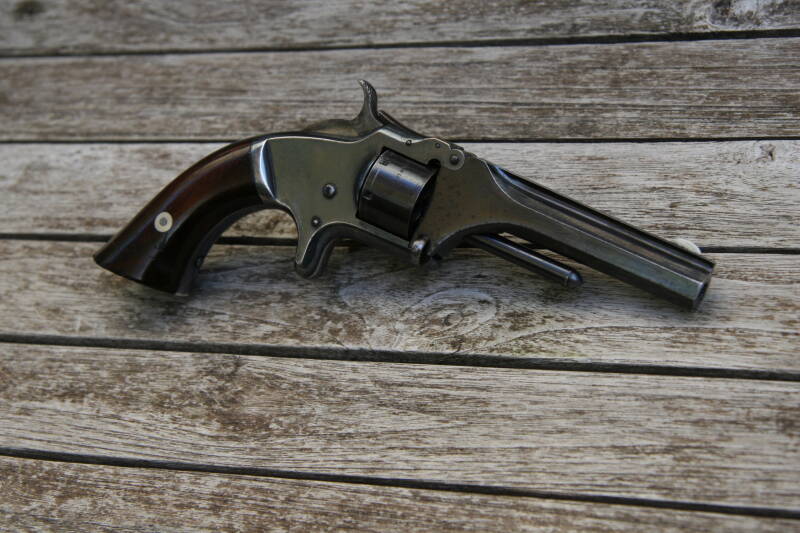
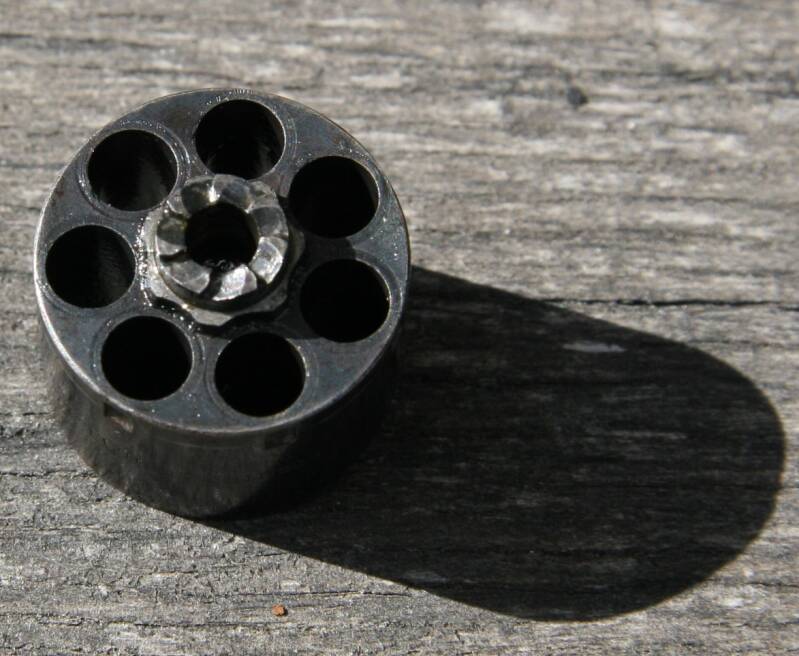

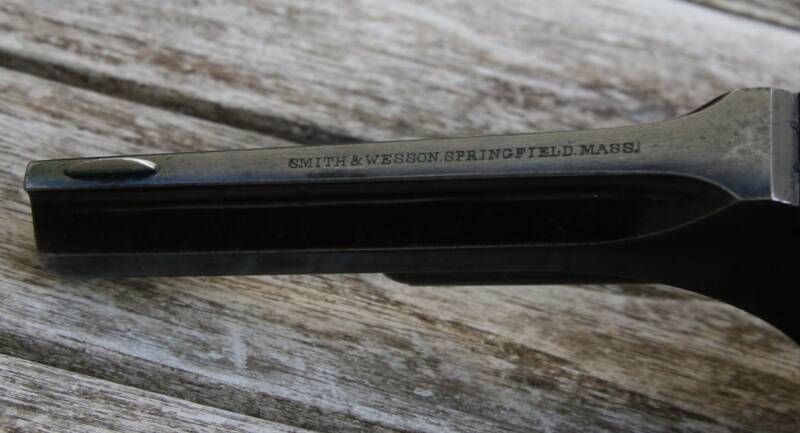
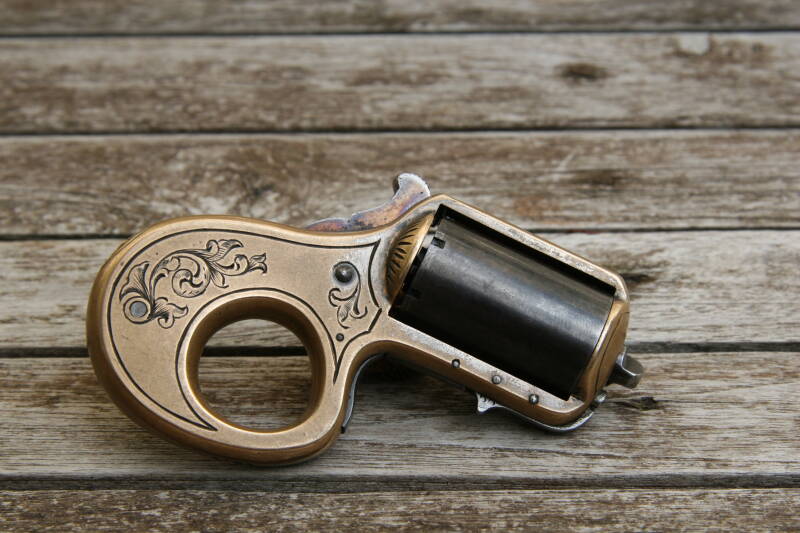
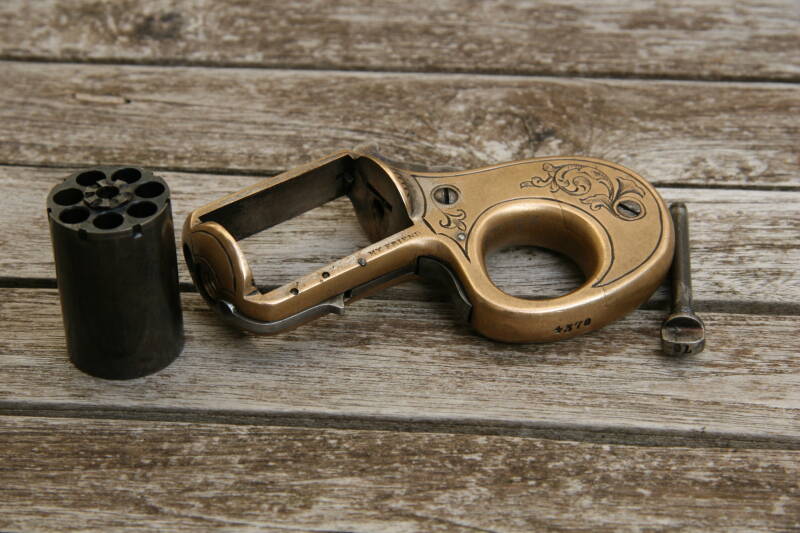
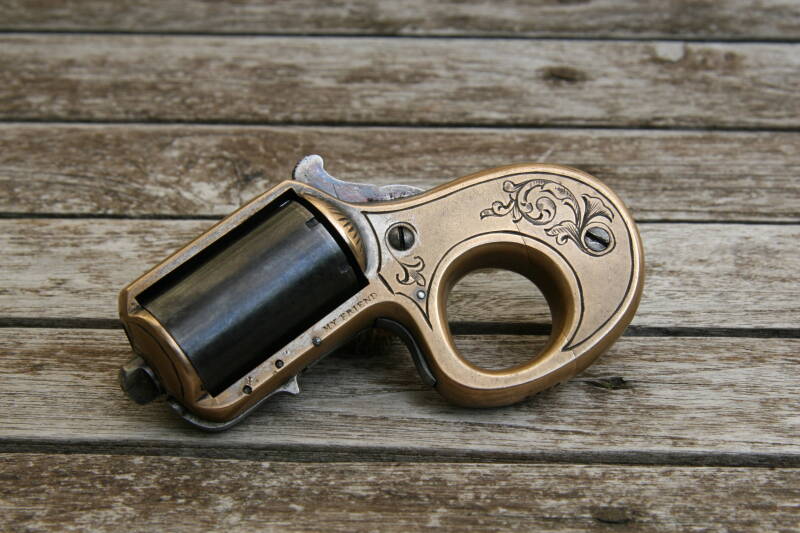
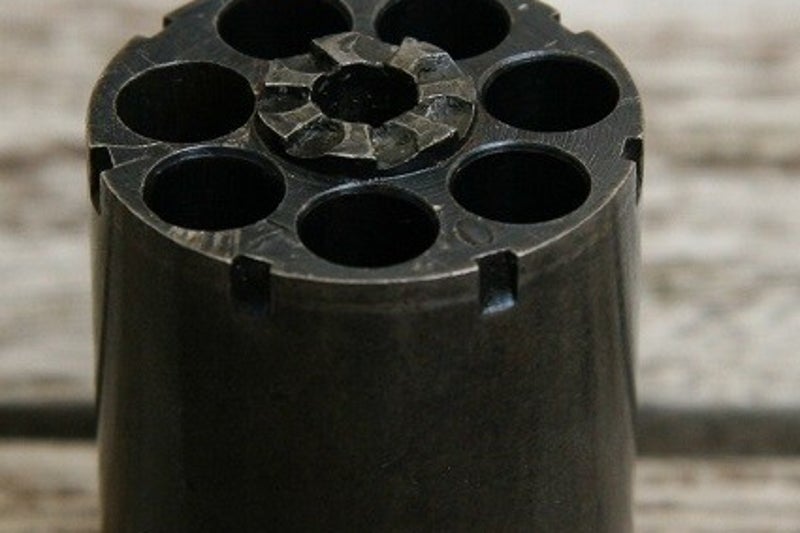
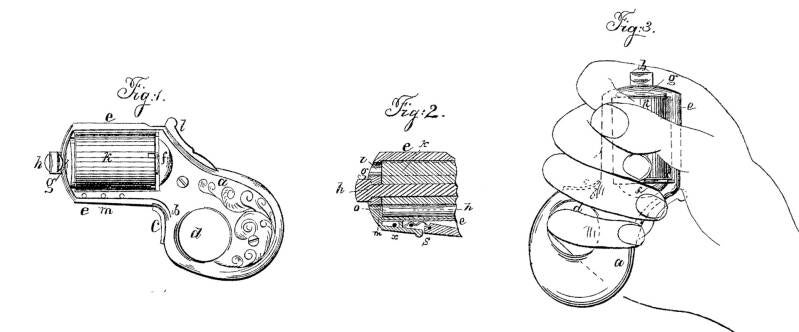
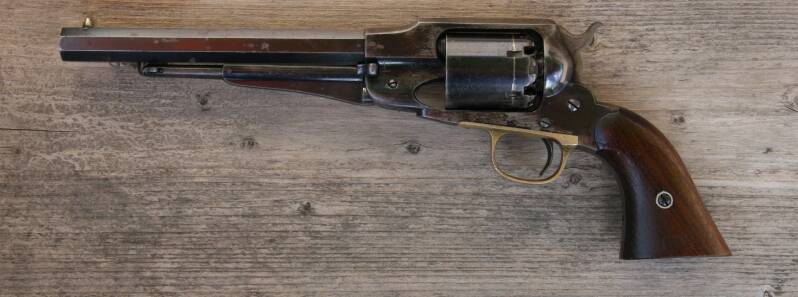
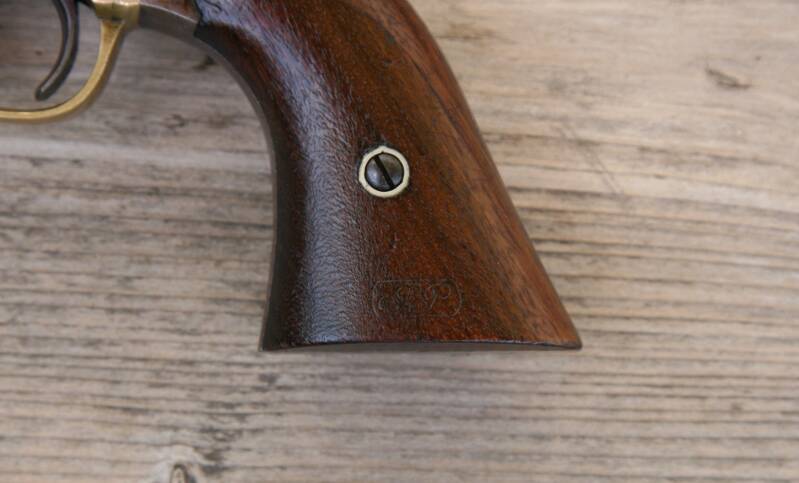

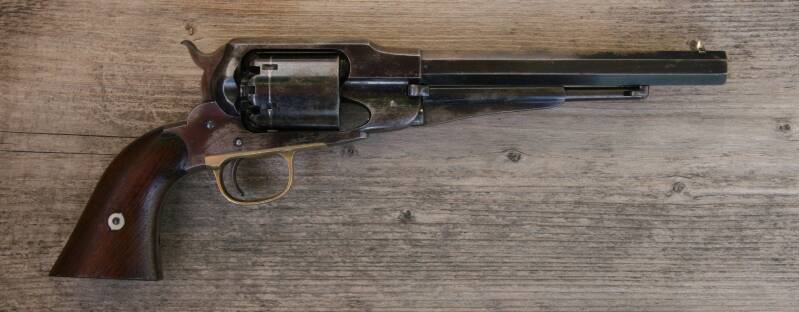




Create Your Own Website With JouwWeb